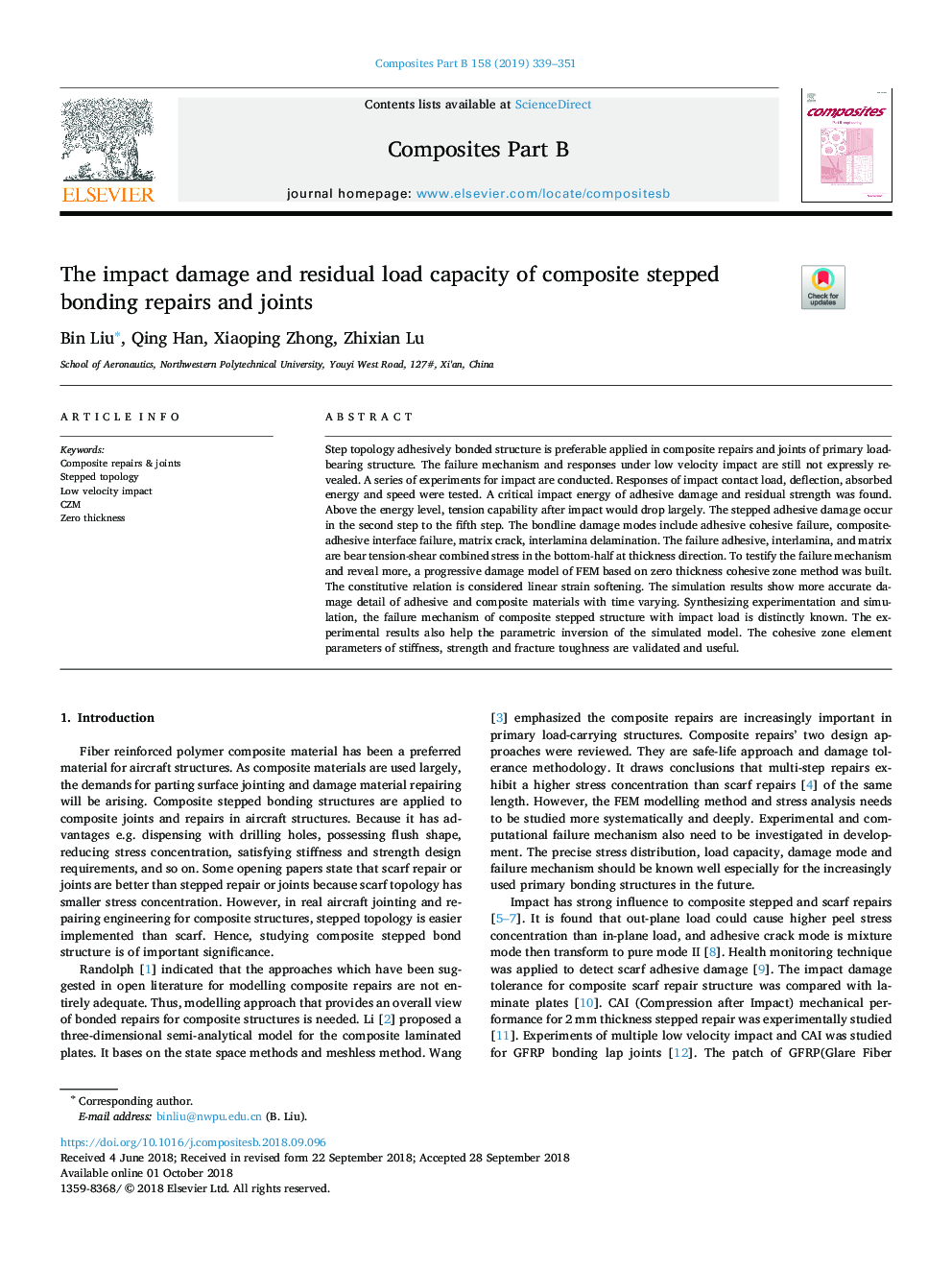| Article ID | Journal | Published Year | Pages | File Type |
|---|---|---|---|---|
| 11020711 | Composites Part B: Engineering | 2019 | 13 Pages |
Abstract
Step topology adhesively bonded structure is preferable applied in composite repairs and joints of primary load-bearing structure. The failure mechanism and responses under low velocity impact are still not expressly revealed. A series of experiments for impact are conducted. Responses of impact contact load, deflection, absorbed energy and speed were tested. A critical impact energy of adhesive damage and residual strength was found. Above the energy level, tension capability after impact would drop largely. The stepped adhesive damage occur in the second step to the fifth step. The bondline damage modes include adhesive cohesive failure, composite-adhesive interface failure, matrix crack, interlamina delamination. The failure adhesive, interlamina, and matrix are bear tension-shear combined stress in the bottom-half at thickness direction. To testify the failure mechanism and reveal more, a progressive damage model of FEM based on zero thickness cohesive zone method was built. The constitutive relation is considered linear strain softening. The simulation results show more accurate damage detail of adhesive and composite materials with time varying. Synthesizing experimentation and simulation, the failure mechanism of composite stepped structure with impact load is distinctly known. The experimental results also help the parametric inversion of the simulated model. The cohesive zone element parameters of stiffness, strength and fracture toughness are validated and useful.
Keywords
Related Topics
Physical Sciences and Engineering
Engineering
Engineering (General)
Authors
Bin Liu, Qing Han, Xiaoping Zhong, Zhixian Lu,
